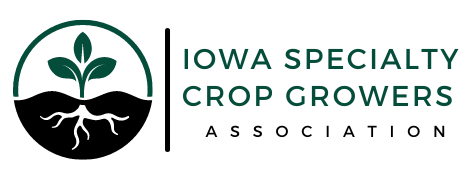Ajay Nair
ISU Extension and Outreach
Department of Horticulture
nairajay@iastate.edu
Many commercial growers and home gardeners often confront the issue of Blossom End Rot (BER) in their tomato, pepper, and eggplant. The BER is a physiological disorder caused by a localized calcium deficiency in the blossom-end of the fruit. It is a physiological disorder and is not caused by fungi, bacteria, or any other living disease microorganisms. Also, BER could also be seen on non-solanaceous crops such as pumpkins, squash, and watermelons.
Symptoms:
Symptoms of BER first appear as light-tan, water-soaked lesions, usually on the distal end of the fruit but in the case of peppers, on the side of the fruit as well (Figure 1 and Figure 2). The lesions then enlarge and become black and could become leathery. In tomato, as BER advances, fruits might develop internal black lesions. Growers should not confuse between BER and sunscald as both symptoms could look alike. With respect to sunscald, it typically appears on the side of the fruit that is exposed to the sun, while blossom end rot can occur on unexposed fruit surfaces, and always at the blossom end.
 |
| Figure 2 |
What causes Blossom End Rot:
In the case of BER, due to lack of calcium, fruit tissue at the blossom end collapses,
turning dark in color. Calcium moves into the plant from the soil with water. Since the blossom end of the fruit is the farthest where calcium accumulation takes place, larger fruits and longer fruits seem to be most susceptible. In fruits, calcium deficiency during early rapid cell division phase carries over as the fruit expands and leads to BER symptoms in fully formed fruit (Figure 3). Research results suggest that signs of blossom end rot on fruits become visible two weeks after the calcium deficiency has occurred.
Calcium is taken up by the plant as a divalent cation (Ca+2). Calcium present on soil particles first moves into soil solution and then taken up by plant roots by diffusion and mass flow. Within the plant root calcium moves into the xylem (water conducting vessels). For calcium to be continuously absorbed and for its movement through the xylem, there need to be continuous movement of water into and up through the plant. It also requires a continuous supply of calcium from the soil. Most soils in Iowa have sufficient calcium through liming applications to support proper plant growth, however we still observe BER. The primary reason we still observe BER is because of inadequate movement of calcium into plants. Factors that influence root and plant growth can significantly impact calcium movement. Some of the examples include improper irrigation, factors affecting root growth such as saturated soils (low oxygen limits root function), root pathogens, soil compaction, soil temperature and soil pH. Calcium availability decreases when soil pH starts trending below 6.0. High root zone temperatures, especially when we use black plastic mulch can also limit root growth and Calcium uptake. There is also an internal competition for calcium within the plant. Since transpiration occurs through leaves, generally there is more calcium there as compared to fruits, which have a much lower transpiration rate.
 |
| Figure 3 |
Timing and proper amount of water should be provided to plants to ensure a continued supply of calcium. Longer irrigation intervals reduce water uptake and may lead to wilting of plants that can severely restrict calcium uptake.
How to tackle BER:
Conducting a soil analysis is a critical step to document important soil properties such as organic matter, pH, cation exchange capacity and concentration of nutrients such as P, K, Ca, and Mg. Soils with low pH should be limed to achieve a target pH of 6.5 which is the optimum pH for availability of most essential macro- and micronutrients. In soils where calcium concentration is low, applying additional soluble calcium through irrigation, can help reduce blossom end rot provided calcium is applied right from the start. Again, it is important to stress the fact that irrigation should also be managed appropriately (applied evenly in adequate amounts). A good strategy is to utilize soil moisture sensors that assists with irrigation decision making.
Many growers are caught off guard and catch BER only during their first or second harvest and tend to resort to foliar calcium applications. Foliar applications are only partially effective when applied to very young developing fruit. Fruits do not absorb much calcium, especially once a waxy layer has developed. If foliar applications are made, when fruits are young and developing, growers could apply 2-4 lb. Calcium (Ca) per acre is recommended. Calcium nitrate (10-15 lb. per 100 gallons per acre) or calcium chloride (5-10 lb. per 100 gallons per acre) could be used for these applications.
In conclusion, keys to limit BER occurrence are to 1) irrigate in a timely manner and provide optimum water, 2) root growth is not affected due to adverse conditions (soil compaction, pathogens), and 3) maintain soil pH is in the proper range.
–Acreage Living Newsletter – Iowa State University Extension & Outreach
